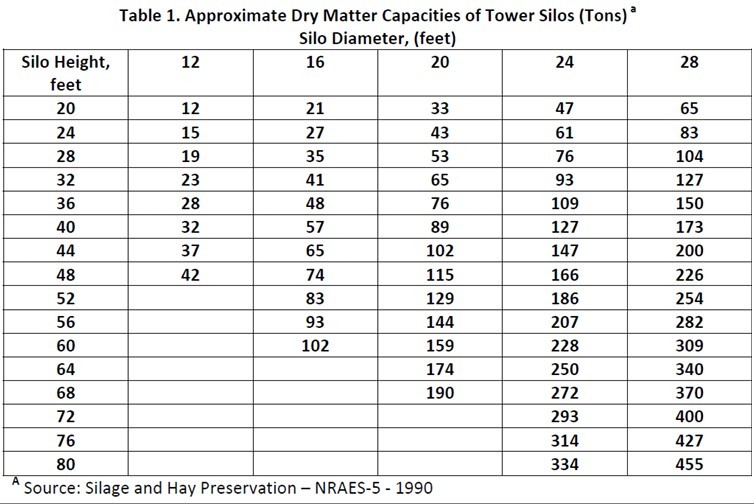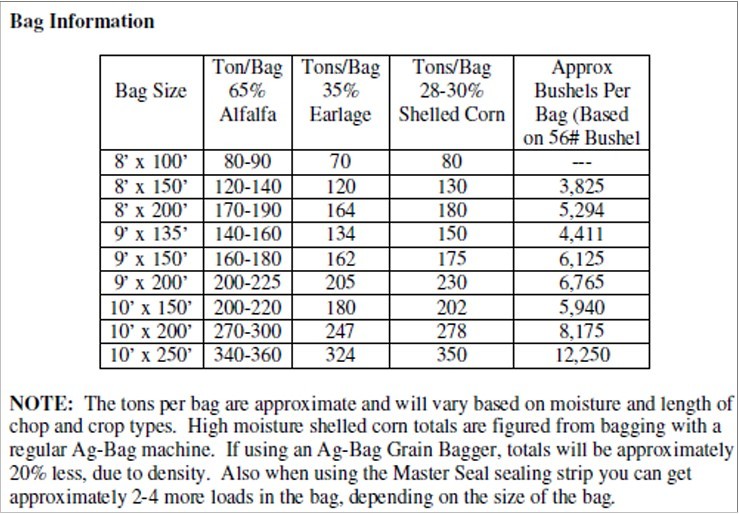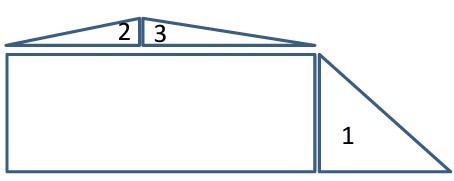Inventorying Forage
Article written by Joe Lawrence: PRO-DAIRY Forage Systems Specialist
With low forage yields, knowing what you have in inventory is critical to plan for how to best manage this feed to get through the coming year. It will affect decisions such as:
- Do I have enough feed for the milking herd and young stock?
- Do I need to look at fillers for the ration to stretch forage inventories?
- Should I cull unproductive animals?
- Do I have more youngstock than I need?
First, you can calculate just how much forage you need by calculating what you are feeding each day, and how many days you will need to feed prior to next year's harvest. Helpful tools to calculate inventory needs are at: http://www.ansci.cornell.edu/d...
If you have a fixed structure such as an upright silo, you likely know in general how long a full silo will last, though the dry matter (DM) content of forage can have a large impact on just how much feed is there and how long it will last.
Upright Silos
For tower silos, Table 1 shown here is from the Cornell Dairy Nutrition Factsheet series "Determining your current forage inventory" located on the web at: http://www.ansci.cornell.edu/d.... This website offers a number of other helpful factsheets related to forages and feeding, as well as worksheets to print and fill in your own numbers to help make calculations for your herd.

Ag Bags
The Miller Ag Bag Company http://www.agbagplastic.com/pd... has a factsheet with the approximate capacities of Ag Bags. Below is a table from their factsheet.

Bunkers and Drive-over Piles
Horizontal silos can be the most difficult to determine inventories for, but that shouldn't stop you from determining them. There are two main factors to determine how much silage is in a pile; total cubic feet of silage in the storage and the density (pounds per cubic feet) of the feed. We have discussed several times the importance of achieving high densities to reduce storage and quality losses, but regardless of what density you were able to achieve, the most important factor when determining inventories is to use the most realistic estimate you can as to not over or under estimate the amount of forage in storage.
There are a few ways to determine density. Samples can be taken from the bunk face, using a tool such as the Dairy One Master Forage probe. Care needs to be taken with this method as working around the face of the bunk can be dangerous. A second approach is to use a density calculation tool from the University of Wisconsin Team Forage. This tool can be found at: http://www.uwex.edu/ces/crops/... or contact CCE to work through the spreadsheet with you. The spreadsheet can be very accurate, but it depends on the accuracy of the numbers you put into the spreadsheet. To use the spreadsheet you need information such as weight of packing tractors, delivery rate of forage to the bunk, size of the bunk, and layer thickness of silage while packing.
Determining the cubic footage comes down to a math problem (cubic feet = lengths x width x height). Since most bunks are not nice even sided boxes, it is best to tackle the storage by ! breaking it into squares, rectangles and triangles. Here is an example of a bunk with side walls and a back wall, a ramp on the front and a sloping top. Though the top may be a little more rounded, in reality you can do the best to measure it as a triangle. Since a right triangle is one half of a square or rectangle, the calculation for the cubic footage of a triangle = ½ (length x width x height). So, for this example the total is:

Rectangle = length x width x height
plus
Triangle 1 = ½ (length x width x height)
plus
Triangle 2 = ½ (length x width x height)
plus
Triangle 3 = ½ (length x width x height)
Upcoming Events
WEBINAR - Automated Milking Systems Efficiency: Balancing Focus on Individual Cows and System Optimization
May 8, 2024
Please join Cornell the SWNY team and MSU Extension for our talk with Dr. Pablo Silva Boloña on improving efficiency of Automated milking systems by focusing on milking settings for individual and group success.
Broiler Field Day at Sunny Cove Farm
June 6, 2024
Alfred Station, NY
Join us for a field day to explore broiler production, processing, and finances. Meghan Snyder of Sunny Cove Farm will be our host. She raises small batches of organic broilers, processing them on-farm under the 1,000 bird exemption.
Stockmanship and Stewardship 2024
October 25, 2024
Hamburg, NY
Save the date!! The event is one of 4 across the US and is a two-day educational experience featuring low-stress cattle handling demonstrations, Beef Quality Assurance educational sessions, facility design sessions, and industry updates.
Announcements
No announcements at this time.





